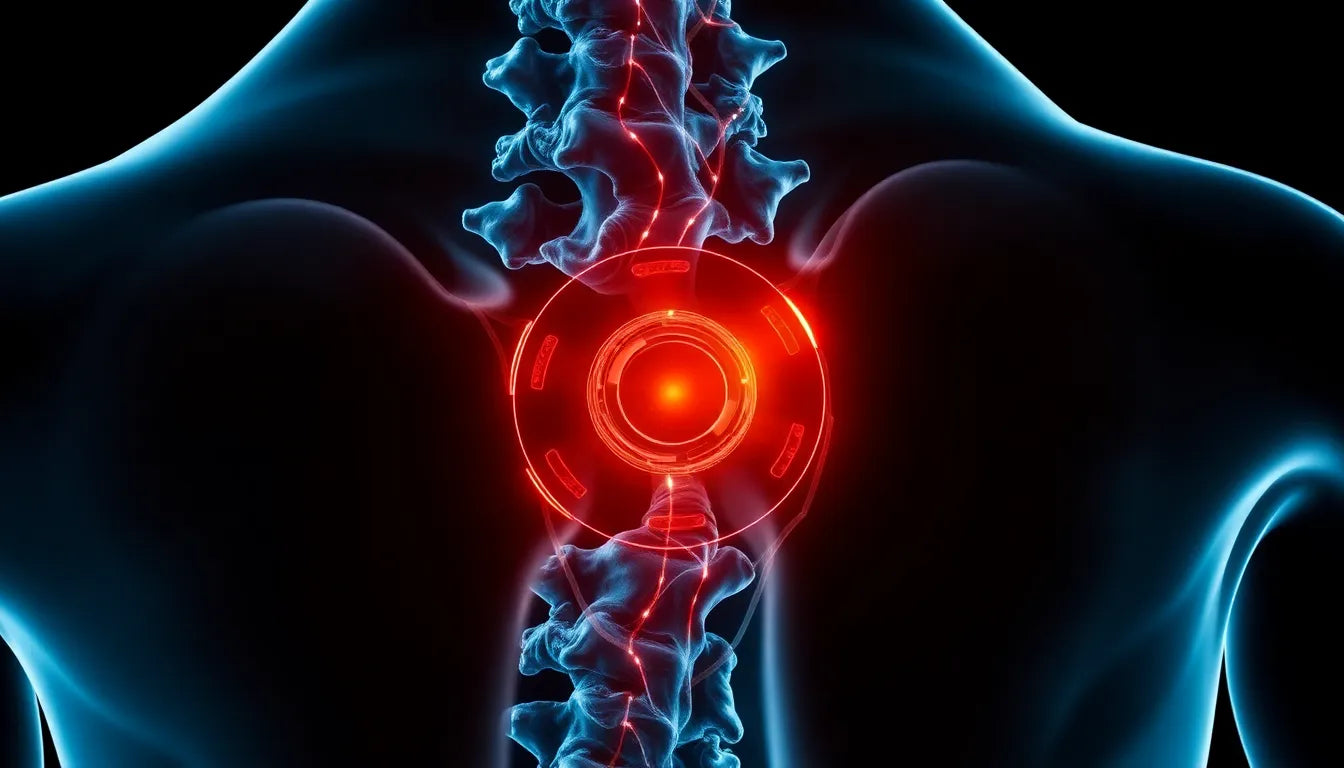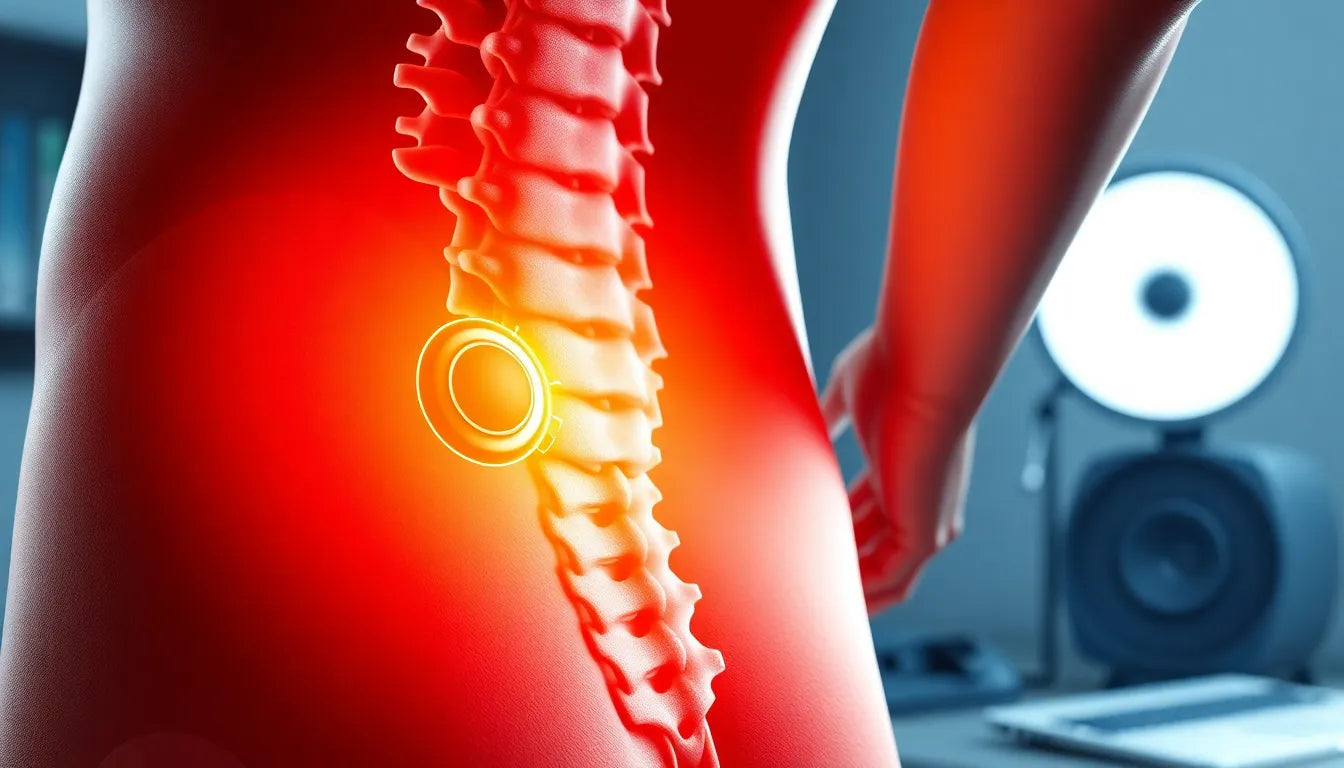Dealing with a herniated disc can be a challenging experience, particularly when it comes to sitting. A herniated disc occurs when the soft center of a spinal disc pushes through a crack in the tougher exterior casing. This condition can lead to discomfort, pain, and even numbness, making everyday activities like sitting a daunting task. The key to managing this pain and preventing further injury lies in understanding the importance of proper sitting posture.
When you sit, your spine should maintain its natural curve. However, a herniated disc can disrupt this alignment, leading to increased pressure on the spine and exacerbating pain. By mastering the art of sitting with a herniated disc, you can find comfort and relief, allowing you to engage in daily activities with greater ease. This involves learning how to sit correctly and making small adjustments to your sitting habits.
importance of ergonomics in sitting with a herniated disc
Ergonomics, or the science of designing environments to fit the user, plays a crucial role in reducing discomfort for those with a herniated disc. Proper ergonomics can significantly improve your quality of life by minimizing strain on your back and promoting a healthier posture. Small changes, such as adjusting the height of your chair or the angle of your computer screen, can lead to substantial improvements.
For instance, ensuring that your desk chair supports the natural curve of your spine can help alleviate the pressure on your herniated disc. Additionally, setting up your workstation to keep your knees level with or slightly higher than your hips can reduce tension in your lower back. Even simple actions, like keeping your feet flat on the floor, can contribute to a more comfortable sitting experience.
By adopting ergonomic principles, you can transform your sitting habits and better manage the challenges of living with a herniated disc. These adjustments not only provide immediate relief but also contribute to long-term health benefits, supporting your journey towards comfort and pain management.
proper sitting posture for herniated disc relief
Achieving the right sitting posture is essential for those suffering from a herniated disc. Proper alignment can significantly reduce the pressure on your spine and help alleviate the discomfort associated with this condition. The first step is ensuring that your back is straight and well-supported against the chair. This helps maintain the natural curve of your spine and prevents additional strain. Slouching, on the other hand, can exacerbate the problem by increasing the pressure on the spinal discs, leading to more pain.
Another crucial aspect of sitting posture involves the positioning of your knees and hips. Ideally, your knees should be level with or slightly higher than your hips when sitting at a desk. This alignment helps distribute your body weight evenly and minimizes tension in the lower back. To achieve this, you may need to adjust the height of your chair or use a footrest. Keeping your feet flat on the floor is equally important, as it provides stability and further reduces strain on the spine.
support modifications for enhanced comfort
Incorporating support modifications into your sitting routine can make a significant difference in managing herniated disc pain. One effective method is using lumbar support to maintain the natural curve of your spine. A rolled-up towel or a small pillow can serve as a makeshift lumbar support. Position it at the small of your back, just above the belt line, to help sustain the reverse C-shape of your spine. This simple adjustment can prevent slouching and reduce the stress on your lower back.
Visual aids, such as diagrams or infographics, can be incredibly helpful in illustrating the correct placement of lumbar support. These tools provide a clear visual reference that can guide you in setting up your seating arrangement for maximum comfort. By consistently using lumbar support, you can create a more ergonomic sitting environment that promotes spinal health and alleviates pain.
exploring sitting alternatives
For those with a herniated disc, exploring alternative sitting options can be beneficial. Standing desks, for example, offer a viable alternative to prolonged sitting. They allow you to switch between sitting and standing throughout the day, which can help reduce the pressure on your spine. When transitioning to a standing desk, it's essential to do so gradually to allow your body to adjust. Start by standing for short periods and gradually increase the duration as you become more comfortable.
In addition to using a standing desk, taking frequent breaks from sitting is crucial. Regular breaks to stretch and move around can relieve muscle tension and improve circulation. A simple stretching routine at your desk can include gentle neck rolls, shoulder shrugs, and seated twists. These exercises can help maintain flexibility and prevent stiffness, contributing to overall pain management.
By implementing these strategies, you can master the art of sitting with a herniated disc and find relief from pain. Proper sitting posture, support modifications, and alternative sitting options all play a role in creating a more comfortable and ergonomic environment. With these adjustments, you can improve your quality of life and better manage the challenges associated with a herniated disc.
Specific situations: sitting comfortably with a herniated disc
Sitting comfortably with a herniated disc can be particularly challenging in certain scenarios, such as when you're on a couch or in a car. These situations require specific strategies to ensure comfort and minimize pain.
When sitting on a couch, it's crucial to choose one that offers firm support rather than a soft, saggy surface that can exacerbate back pain. To sit comfortably, position yourself so that your back is straight against the couch back, using a lumbar support cushion if necessary. Keep your feet flat on the floor, and if the couch is too deep, place a pillow behind your back to maintain the natural curve of your spine. When lowering yourself onto a couch, approach it slowly and use your hands to support your descent, ensuring you maintain control and avoid sudden movements that could strain your back.
In a car, adjusting your seat to provide the best support is vital. Ensure your seat is at an angle that allows you to maintain a straight back, and use a lumbar support cushion to preserve the curve of your spine. Adjust the seat height so that your knees are level with or slightly higher than your hips, and keep your feet flat on the floor or on the car's pedals. Regularly take breaks during long drives to stretch and relieve tension.
Frequently asked questions
What is the best sitting position for a herniated disc?
The best sitting position for a herniated disc involves maintaining a straight back aligned with the chair, keeping knees level with or slightly higher than the hips, and ensuring feet are flat on the floor. Using lumbar support can help maintain the spine's natural curve and reduce strain.
How often should I take breaks when sitting with a herniated disc?
It's recommended to take a break every 30 to 45 minutes when sitting with a herniated disc. Use this time to stand, stretch, and walk around to relieve muscle tension and improve circulation.
Can ergonomic products help with herniated disc pain?
Yes, ergonomic products such as chairs with proper lumbar support, footrests, and adjustable desks can significantly alleviate herniated disc pain by promoting better posture and reducing strain on the spine.
Is it better to sit or stand with a herniated disc?
Neither sitting nor standing for prolonged periods is ideal with a herniated disc. A balanced approach, alternating between sitting and standing, can help manage pain and prevent additional stress on the spine.
What other lifestyle changes can help manage a herniated disc?
In addition to proper sitting techniques, incorporating regular exercise, maintaining a healthy weight, and seeking physical therapy can effectively manage a herniated disc. These lifestyle changes can help strengthen back muscles and improve overall spinal health.
By understanding how to sit comfortably in various situations and incorporating ergonomic solutions, you can better manage the challenges of a herniated disc and improve your quality of life. These strategies, combined with lifestyle adjustments, can provide significant relief and promote long-term spinal health.
Sources
- NY Bone & Joint. "Sitting and Sleeping Positions for Herniated Discs."
- Dr. Kevin Pauza. "Pain Management for Herniated Discs."
- Spine-health. "Proper Sitting Posture for Herniated Discs."
- YouTube. "Visual Demonstrations of Sitting Techniques for Herniated Discs."
- Barricaid's Blog. "Couch Sitting with a Herniated Disc."
- St. Louis Pain Consultants. "Ergonomic Solutions for Herniated Disc Pain."


















